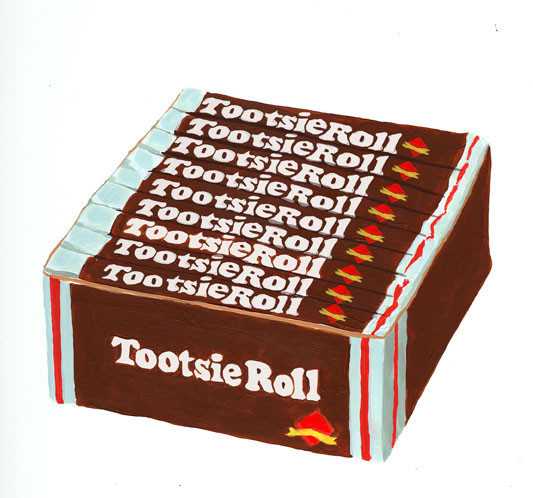
Ellen Lupton
Before Ellen Lupton, the curator of contemporary design at Cooper-Hewitt and the author of a pile of books on the topic, DIY was not considered legitimate. It was for punky types with access to a Xerox and little regard for the mainstream. It was scruffy, unglossy and deliberately under-the-radar.
It was not something you'd see discussed with reverence on design blogs.
"When I started talking about DIY, it angered a lot of professional designers," Lupton says. "The thinking was, 'if anyone can design a business card, design is no longer anything."
Professional designers, those arbiters of what's aesthetically acceptable and what's Comic Sans, had no reason to worry. In the past 5 years since Design It Yourself was published, the DIY movement has exploded in a way that benefits pros. According to Lupton, instead of "DIY" standing for do-it-yourself, it's shorthand for a thriving community that reveres professional designers, strives for aesthetic literacy and reinvents old methods of doing things.
Admittedly, I was a bit cynical. Yes, DIY culture has greatly benefitted from the technology age. After all, here I am. But part of me, which always sides with the underdog, wonders if a more plugged-in culture kind of ruins the unselfconscious original spirit of the movement. You only have to look at the big Renegade-type markets to see why the free exchange of ideas can lead to only a few "acceptable" design concepts. Helvetica and Futura, the names of more than a few Brooklyn babies. The deliberate use of white space that yes, looks visually pleasing, but also has the disconcerting effect of making every indie biz look like an ad for a Scandinavian design studio. The use of "etsy" as an adjective instead of a noun.
And then there are the owls. Anyone who has pointed their browser towards the handmade marketplace knows the owls are inescapable (but thankfully on the way out). There's nothing wrong with owls, but it's more about how the owls got here: The internet births micro-trends that are original for two seconds, then become inescapable and never die. Zombies, Keep Calm Posters, Abraham Lincoln, fascinators, dictionary pages, hand-drawn lettering. Put a bird on it indeed.
Lupton laughs. "It does feel like Portlandia, doesn't it? But trends are trends and have always been an important thing for a designer to pay attention to: Though it's less about the trend itself and more of an exercise in decoding what concepts within the trend are appealing to people and why," she says.
The example is hand-drawn-lettering. "I'm sick of it," Lupton says. "But I realized why it matters: It works perfectly with illustration, a field that has exploded on the internet. Illustrated lettering looks better with illustration than regular text. While there will be a time when we're sick of the other trends, illustration is not a trend and will always be around."

Paingtin by Ellen Lupton
Illustration has been revolutionized by technology. I spend my day on Drawn, Drawger and Illustration Friday. The illustrated subject is an oasis in a medium where text rules and stock photos tend to dominate. Lupton is right, the fact that illustration proliferates thanks to technology doesn't mean it's over.
"After all, there will always be a new owl," Lupton says. "And there always will be artisans who should, perhaps, keep their work to themselves. But overall, the internet has been nothing but beneficial to the DIY culture, creating a community for people who ordinarily are normally stuck at their desks for hours at end."
It sounds suspiciously optimistic, but I can't help but become less cynical the more I talk to Lupton. She's right about one big thing: DIY is no longer about an individual, but rather a community. A community that yes, produces owl crafts in droves occasionally, but overall gives rise to amazing things like toy sailboats that can mop up oil spills. I'm embarrassed; it's like I was damning TV across the board because a few Kardashians joined the party.
"It's easy to forget that DIY is not synonymous with crafting, because right now, crafts are a big part of the DIY culture," Lupton says. "But if DIY is anything, it's diverse, covering everything from robotics to 3D printing."
Does she have any words of wisdom? Of course.
"Internet has always been part of the wave of DIY. The desire that people not only can learn something but share their knowledge, and it relates to that social impulse. It's not about sitting in your apartment and making something, it's about teaching something. And it also encourages people to get together. The whole notion about the internet being isolation, that's so untrue...it's connected more and more people. So, connect."
You heard the lady. What do you say?